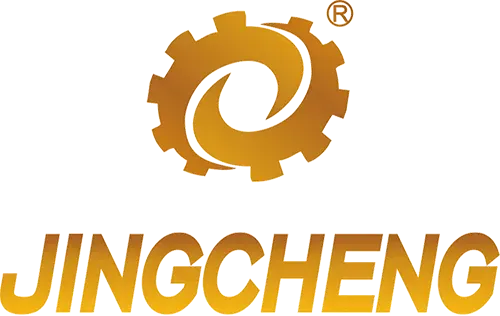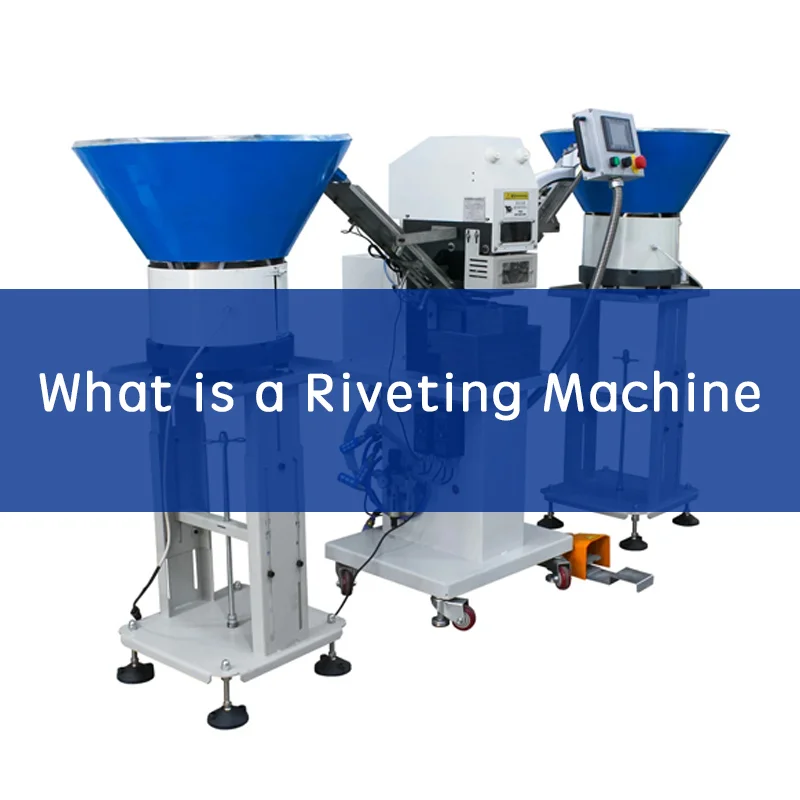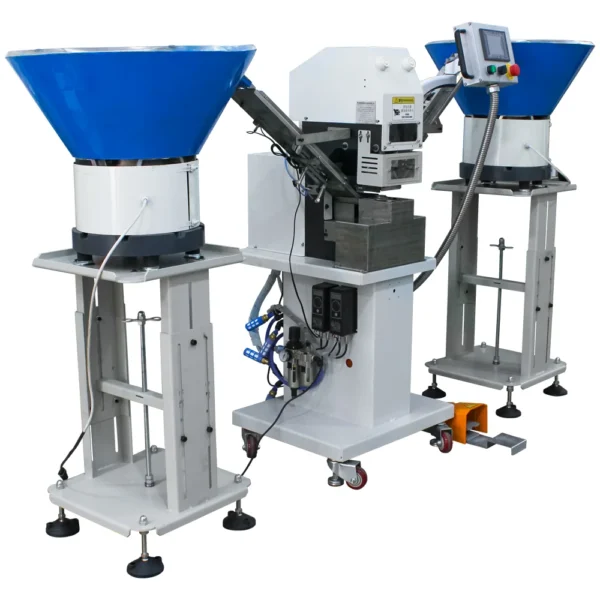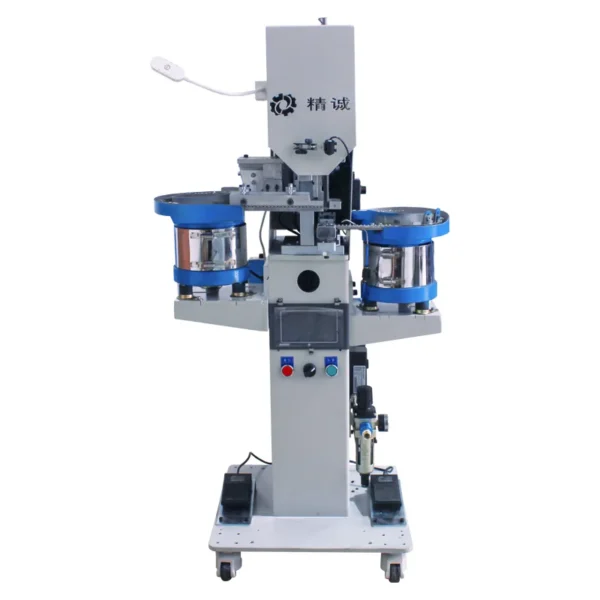A riveting machine is an essential tool in the manufacturing and construction industries, so, what is a riveting machine, used to permanently join two materials together using a rivet. This article explores the functionality, types, applications, benefits, and challenges associated with riveting machines.
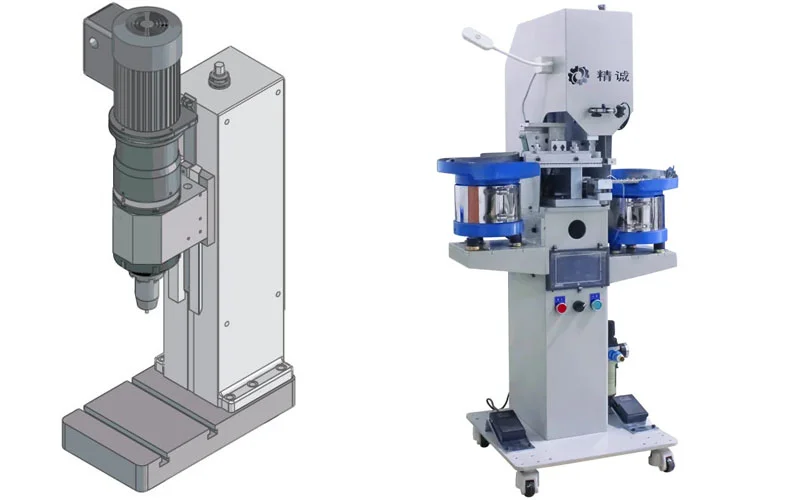
Riveting Machine Types and Categories
Classification is a good way to understand What is a Riveting Machine.
Pneumatic Riveting Machines
Pneumatic riveting machines operate using compressed air to drive rivets into materials. They are popular for their speed and precision in the automotive and aerospace industries.
Pneumatic riveting machines are specialized tools used in various industries for assembling components with rivets. These machines utilize compressed air to generate the force needed to drive rivets into materials, creating strong, permanent joints. Here’s an overview of their features, benefits, and applications:
- Compressed Air Power: These machines use pneumatic pressure, typically between 90-120 psi, to operate. The air pressure drives the rivet gun or rivet squeezer, ensuring consistent force application.
- Various Rivet Types: Capable of handling different types of rivets, including solid, blind, and semi-tubular rivets, making them versatile for various applications.
- Control Systems: Often equipped with advanced control systems to regulate pressure, timing, and rivet placement, ensuring precision and repeatability.
- Ergonomic Design: Designed to reduce operator fatigue with features like lightweight tools, vibration dampening, and comfortable grips.
- Adjustable Settings: Allows for adjustments in force and speed to accommodate different materials and rivet sizes.
What is a Riveting Machine: Pneumatic Riveting Machines Benefits
- Efficiency: Pneumatic riveting machines can perform riveting operations quickly and consistently, increasing production speed.
- Strength and Durability: Rivets installed by these machines create strong, reliable joints, essential for structural applications.
- Precision: The machines ensure accurate rivet placement and consistent pressure application, reducing the risk of joint failure.
- Reduced Operator Fatigue: Ergonomically designed tools and automated features help minimize the physical strain on operators.
- Versatility: Suitable for various materials, including metals, plastics, and composites, used in different industries.
Types of Pneumatic Riveting Machines
Rivet Guns: Handheld tools used for driving rivets, available in various sizes and configurations.
Rivet Squeezers: Tools that compress the rivet from both sides, providing a strong joint with minimal material deformation.
Automatic Riveting Machines: High-volume machines for continuous production, often integrated into assembly lines.
Orbital Riveting Machines: Uses an orbital forming process to create a rivet head, ideal for delicate materials and precise applications.
What is a Riveting Machine? The main type is Pneumatic Riveting Machines, which is the most widely used type in all industries.
Pneumatic Riveting Machines Applications
The study of what is a riveting machine must involve the application market of riveting machines.
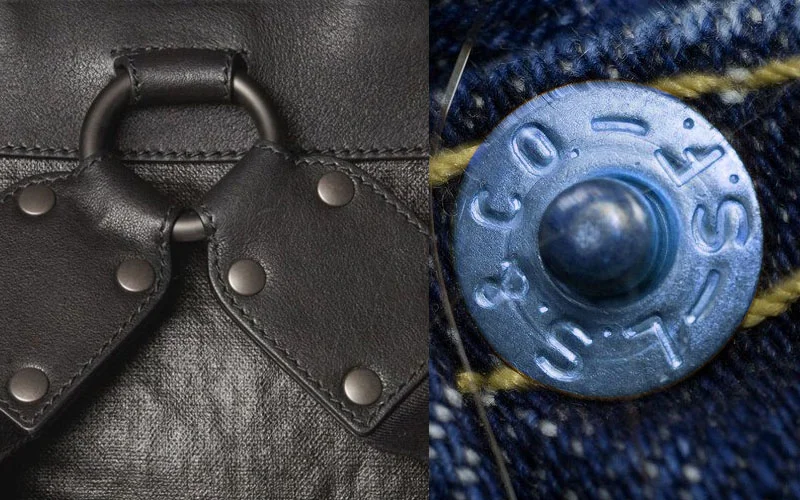
Home Textiles: Clothes, shoes, curtains, leather, stationery.
Industry: Tents, tarpaulins, banners, paper boxes.
Aerospace: Critical for assembling aircraft components where strong, lightweight joints are essential.
Automotive: Used in the production of car bodies and other structural components.
Construction: Ideal for joining metal beams, frames, and other structural elements.
Electronics: Employed in the assembly of electronic devices and enclosures.
Furniture Manufacturing: Utilized for assembling metal and plastic furniture parts.
Hydraulic Riveting Machines
Hydraulic riveting machines use hydraulic pressure to set rivets securely. They are known for their high force capability, making them suitable for heavy-duty applications in construction and shipbuilding.
Mechanical Riveting Machines
Mechanical riveting machines rely on mechanical force to drive rivets, making them versatile for various materials and applications in manufacturing.
Components of a Riveting Machine
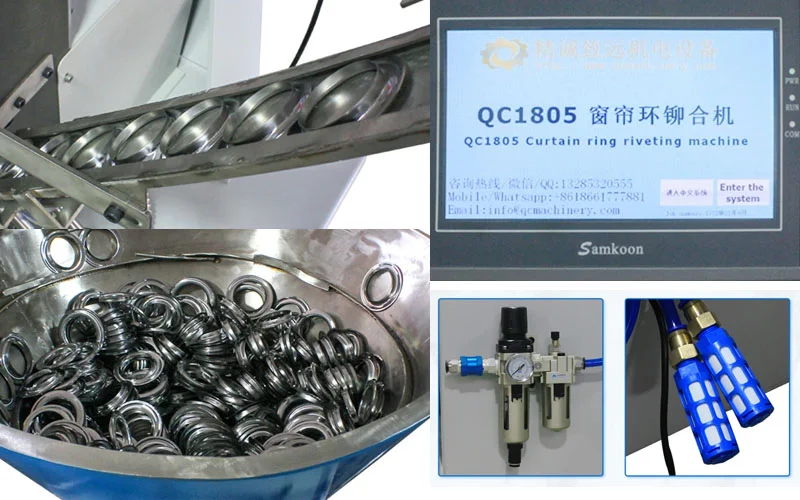
What is a riveting machine? Understanding the machine body will lead to more practical conclusions.
Feed Mechanism
The feed mechanism of a riveting machine controls the automatic feeding of rivets into position, ensuring continuous operation and efficiency.
Rivet Setting Tool
The rivet setting tool is the part of the machine that deforms the rivet, securing it firmly between the joined materials.
Power Source
Riveting machines can be powered by electricity, compressed air (pneumatic), or hydraulic systems, depending on their design and intended use.
Automatic Riveter Operating Principles
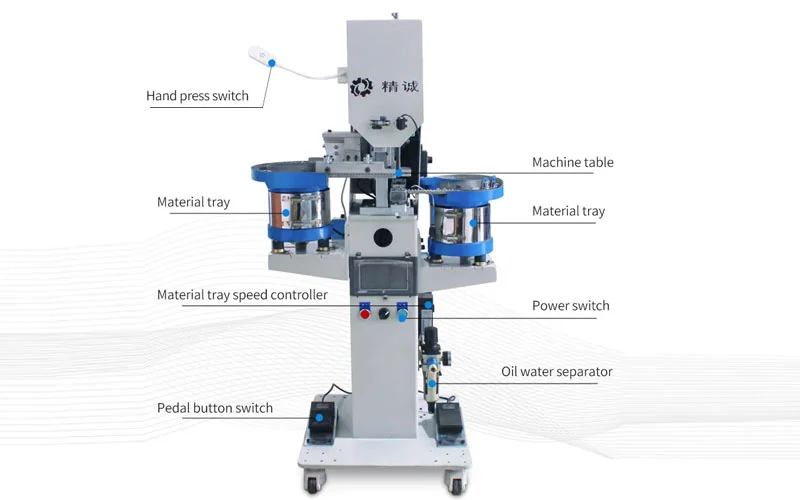
Setup and Configuration
Machine Setup: Configure the automatic riveter, a specialized tool used for joining materials with rivets, based on the job’s specific requirements, including rivet type, material thickness, and desired joint strength. Understanding what is a riveting machine is essential for this process to ensure the correct configuration.
Rivet Loading: Load rivets into the machine’s hopper or feed system for automatic supply to the riveting head.
Material Placement
Positioning: Position the materials to be riveted, which are often metal or composite, in the machine’s work area manually or using robotic arms and positioning systems.
Clamping: Securely clamp the materials to keep them stationary during riveting.
Rivet Feeding
Automatic Feeding: Use a feeding mechanism, like a vibratory bowl feeder or tape feeder, to deliver individual rivets to the riveting head.
Orientation: Ensure each rivet is correctly oriented for insertion.
Rivet Insertion
Riveting Head: The riveting head, driven by pneumatic or hydraulic power, descends to insert the rivet into pre-drilled holes in the materials.
Pressure Application: Apply a controlled amount of pressure to drive the rivet into materials, adjustable for different sizes and types.
Rivet Deformation
Forming the Joint: Form the rivet head by hammering or squeezing, creating a secure joint. This is a critical step in the function of a riveting machine, ensuring the strength of the connection.
Orbital Forming: Some machines use an orbital path to form the rivet head smoothly and precisely.
Quality Control
Force and Displacement Monitoring: Modern riveting machines are equipped with sensors to monitor the force and displacement during the riveting process, ensuring each rivet is properly installed.
Error Detection: The machine detects and alerts operators to errors, such as misaligned rivets or insufficient pressure.
Cycle Completion
Completion and Ejection: After the rivet is formed, the machine completes the cycle by retracting the riveting head and unclamping the materials. Eject the completed assembly, ready for the next cycle.
Automation and Control
Programmable Logic Controller (PLC): PLCs control the riveting process, allowing precise control and easy adjustments.
User Interface: Operators use a touchscreen panel to set parameters, start/stop cycles, and monitor the process. This interface is a key component of modern riveting machines, enhancing usability and efficiency.
Understanding what is a riveting machine and its components is crucial for operating and maintaining it effectively.
Step-by-step Riveting Process
- Prepare Materials: Gather the materials to be joined and ensure they are clean and properly aligned.
- Load Rivet: Insert the rivet into the feed mechanism of the machine.
- Position Materials: Place the materials to be joined under the riveting tool.
- Activate Machine: Initiate the riveting process using the appropriate settings and controls.
- Inspect Joint: Check the quality of the joint to ensure it meets specifications.
Safety Precautions
- Wear protective gear, including goggles and gloves, to prevent injuries from flying debris or machine operation.
- Follow manufacturer instructions for safe operation and maintenance of riveting machines.
FAQs
How does a riveting machine work?
A riveting machine works by inserting a rivet into pre-drilled holes of the materials to be joined and then deforming the rivet’s tail to create a secure joint. This deformation can be achieved through hammering, squeezing, or orbital forming.
What are the types of riveting machines?
Types of riveting machines include manual riveters, pneumatic riveters, hydraulic riveters, and automatic riveters. Each type uses different mechanisms and power sources to drive and form the rivets.
What are the advantages of using an automatic riveting machine?
Automatic riveting machines offer increased efficiency, consistent quality, reduced labor costs, and precision in rivet placement. They are ideal for high-volume production environments.
Conclusion
In conclusion, riveting machines play a critical role in modern manufacturing by providing efficient, reliable, and strong methods for joining materials. Their ability to consistently produce high-quality joints makes them indispensable in industries where structural integrity is paramount.
Understanding the functionality, types, and benefits of riveting machines is essential for selecting the right tool for specific applications and ensuring optimal performance and safety in the riveting process. As technology advances, the integration of automation and smart sensors continues to enhance the capabilities and precision of these essential machines.
